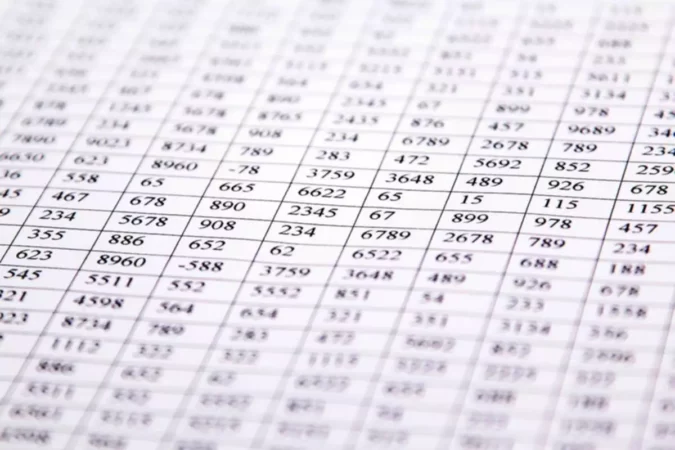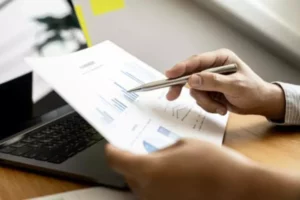Overview
In the course of their activities, enterprises are faced with certain costs, without which it is impossible to achieve goals and which are the main constraints to business success. Hence, we can conclude that the efficiency of an enterprise directly depends on reducing costs, which brings us to the moment of the need to “understand” the essence of costs, analyze them and build the correct cost management system.
The process of cost finding is known as costing. It is defined as a technique and process of ascertaining costs. Whenever you need to find costs, you need to go through some process through which you can get the cost of a particular item. Why would you need to find that cost? It is necessary because the price of your product depends on the expenses you incurred in the process of its production. It is also necessary for the business to know the cost in order to be able to calculate the profit it earned as a result of its activities.
Cost accounting is one of those concepts that you should be at least familiar with if you want to get into manufacturing or a business that can measure its production processes and apply standards to them. In fact, cost accounting is all about establishing standards and standard measures that businesses can use. After all, manufacturing processes can be very predictable, which allows creating standards and then comparing the actual results to the standards and measure and analyze the variances. Thus, the focus of this time of accounting is to find the costs and take measures to control them.
You can define cost accounting as the application of accounting and costing methods, techniques, and principles in the determination of costs and the analysis of variances (savings or loss) as compared to standards or previous data. These standards are set because the means or resources are scarce and the business needs to utilize these resources as effectively as possible to generate as much profit as possible.
Cost accounting is something that a company can do on a voluntary basis as it is not required by the regulatory authorities like financial accounting is. Only in few cases cost accounting would be required for manufacturing companies. However, most large manufacturing businesses choose to make cost accounting part of their business strategy in achieving the best possible results.
Purpose
The main purpose of cost accounting is cost reduction. Reducing businesses expenses is one of the goals of every single business. After all, thanks to reduced costs, the business is able to get higher profit margins or set a lower price and attract a lot more customers.
Another purpose of cost accounting is cost control. Cost reduction would not be possible if the company did not have some time of baseline as a guide. Cost accounting helps to set and follow budgetary limits. Finally, it is necessary to simply be able to compute the cost of goods per unit, which once again gives the financial data to work with when setting the prices and when trying to manage costs more effectively.
Components
In cost accounting, you would set up special accounts to account for business costs. It is generally accepted that cost accounting accumulates information on three categories of costs, which can be represented as:
- Direct material costs
- Direct labor costs
- Overheads.
Each category can be broken further down, which makes it possible to measure the rates and the quantity. For example, for direct materials, you would want to measure the price of materials and see how much the price varies when comparing to the standard price (maybe you have a new supplier or signed a new contract). When it comes to the quantity of materials, you would want to how much exactly of a particular material you use for the production of a specific product. Once again, you would compare these numbers to the standards adopted by your company.
Similarly to measuring the rate and quantity of direct labor, you would want to see by how much the payroll rates have gone up and whether your employees had to input more or fewer hours to produce the final product. In the cost analysis, these actual numbers are set against the standards.
Direct costs include items of expenses directly related to the production: wages for workers, operating costs of equipment and machinery (overhead), materials. Direct costs form the bulk of the cost of the product.
Labor costs item reflects all labor costs:
- production workers employed directly in the production facility and who are actually assembling and manufacturing the product;
- workers carrying out the movement of materials and equipment within the production area and to the warehouse;
- salaries of workers involved in the management and maintenance of production machines and mechanisms are included in the overhead costs;
- salaries of workers engaged in loading and delivering materials to the on-site warehouse are included in the costs under materials.
The materials imply the costs of purchasing materials, semi-finished products, finished products, parts, taking into account their delivery to the on-site warehouse and storage. Examples of such materials include sugar and flour to make cookies and plastic, steel, and glass that go into the production of airplanes. An on-site warehouse is a place for storing or unloading materials, semi-finished products, parts, and products, from where they are directly supplied to the working area for processing.
Overhead costs are directly related to the production and manufacture of those products. You can break them down into the following:
- depreciation;
- repair and spare parts costs;
- the cost of energy resources (electricity, fuel) and supporting materials;
- salary of drivers.
You can also look at the overhead in terms of variable and fixed costs. Variable means that the particular expense will grow as you start making more products. For instance, this can be an electricity bill because you will be spending more energy to have more machines operating or have them working for more hours. Fixed costs, on the other hand, are very predictable and you will have to pay, for example, the same amount of taxes for the property on which your manufacturing facility is standing no matter how much you make. Just like with the other cost accounting items, the variance between the actual costs and the standards will get measured and evaluated.
How cost accounting differs from financial accounting
Financial accounting focuses on the preparation of financial statements. It shows company performance over a particular time and its financial position on a particular date. Simply put, it provides information about the business. Financial accounting information is needed for shareholders, creditors, government, investors, and other entities outside the management. In other words, it is concerned with external transactions, while cost accounting is concerned with internal transactions.
As you have learned in this article, cost accounting focuses more on the product, services, process, and operation of the business. It is primarily necessary for internal purposes. More specifically, it provides cost information required for making various management decisions, planning, and controlling. For this reason, it is considered to be part of the larger category of accounting known as managerial accounting.
Cost accounting relates to transactions connected with manufacturing. It presents non-monetary information. In fact, cost accounting records expenditures in an objective manner, while financial accounting records the transactions in a subjective manner and assigns a monetary value to each. If financial accounting primarily deals with actual figures and facts, cost accounting can partially involve estimates.
Cost accounts show the detailed cost and profit data for each product line, department, process, etc. Actually, cost accounting covers only parts of the financial accounts, while financial accounting covers accounts of the whole business. Nonetheless, it provides valuable information on business efficiency and points to ways this efficiency can be improved and which areas need to be analyzed further and worked on.
A company can create a detailed plan for each product and activity based on this information. This brings us to another difference that lies in the cost analysis. With financial accounting, you would be subtracting costs from revenue to arrive at net profit value. When it comes to cost accounting, you would be analyzing just the costs for every product, department, process, and so on.
In a conclusion, we would like to say that cost accounting has a lot to offer businesses that are working in the manufacturing sphere or doing work that has a lot of cost elements to account for. This approach to accounting will give management new tools to identify reasons for losses, control cost, identify unprofitable activities, measure and improve efficiency, and much more. Its major downside can be considered the additional costs of the accounting itself.


















